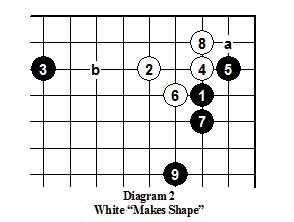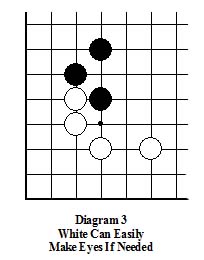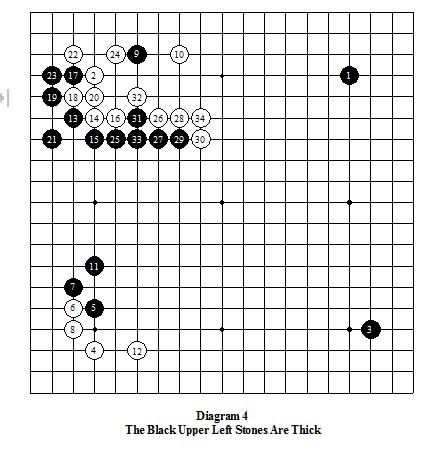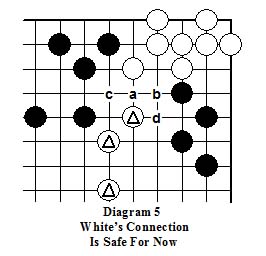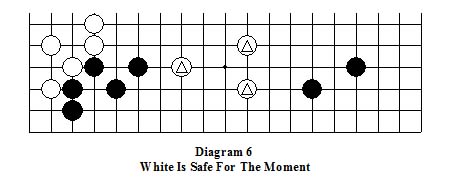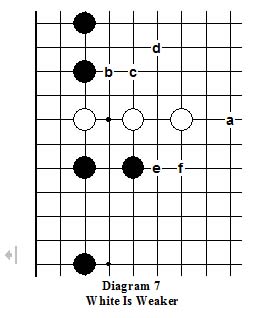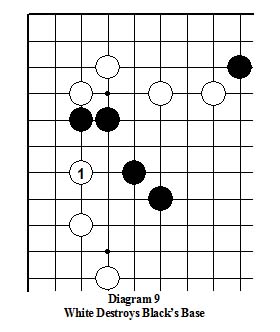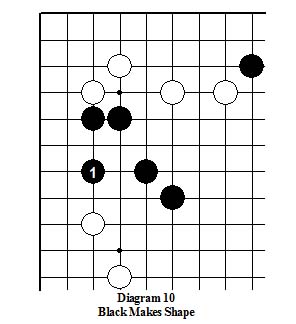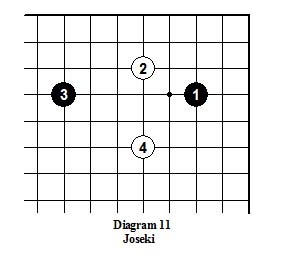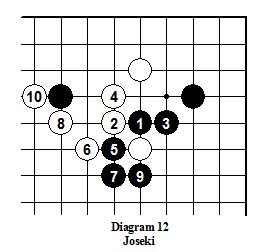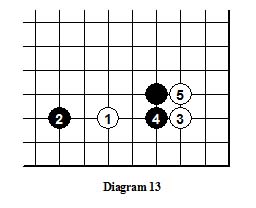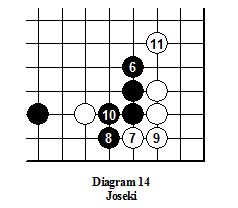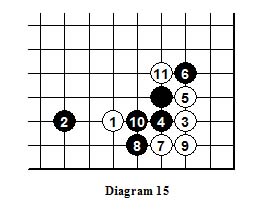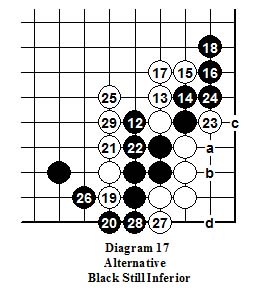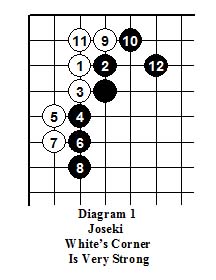
Diagram 1Although the White corner stones are almost completely enclosed, they’re safe and strong because there is no way that Black can directly prevent them from making two eyes!
The problem with White’s strength here is that, except for the territory enclosed it’s essentially wasted, because these stones are almost completely cut off from any interaction with the remainder of the board. (So in the sense of the last chapter, these stones are unimportant!)
